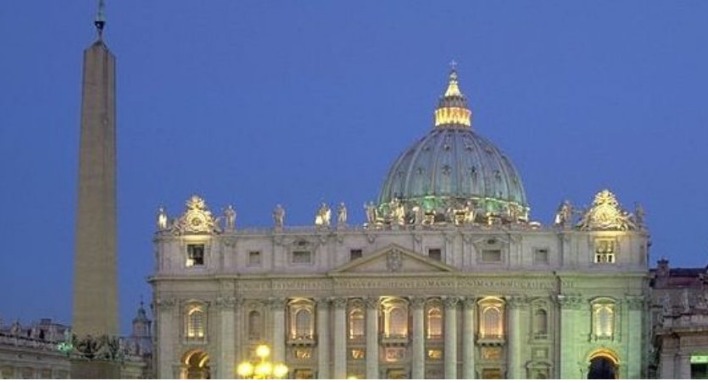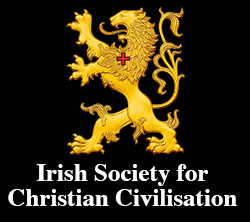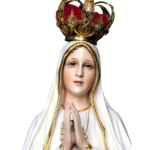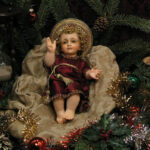
Regardless of whether the Mother and Baby Home Report is accurate or not, it is important to answer if the One, Holy, Catholic, and Apostolic Church can still be Holy when it has so many sinners in its midst.[1] How can it be the true Church people will ask themselves?
The answer lies in the two-fold reality of the Church, both supernatural and natural, divine and human.
The visible human element is subject to the effects of both Original Sin and the state of trial on this earth. Thus the human element of the Church is subject to sin, even when vested in the priesthood or the loftiest dignities of the hierarchy.
However, there is an important distinction. When a member of the Church sins, he does not sin as a member of the Church or because of the Church. He sins because he is unfaithful to Her principles and to the life of grace She generated in him. Even in this state of sin, a member of the Church in one sense continues to be holy. He is holy because a holy sign, Baptism, links him to the Church and because the Church gives him the principles of truth and holiness contained in Her doctrine, morals, and sacraments.
A sinner is, therefore, a bad member of the Church, who diverges from Her by sinning; it is a partial divergence as long as he retains the Faith. He is an unhealthy member of the Church – like a tumor in a living body, to use St. Augustine’s realistic comparison.
Though he is a wilted branch attached to the vine, the sinner nevertheless preserves in himself some elements of holiness. In him, this holiness is part belonging to the Church and it sustains him as a member of Her. The sin, which separates him from Her, makes him a son of the devil, in St. John’s strong words.[2]
The Church Encompasses Sinners but Not Sin
Charles Cardinal Journet provides this beautiful explanation.
The Church contains sinners. But she does not contain sin. It is only in virtue of what remains pure ad holy in them that sinners belong to her – that is to say in virtue of the sacramental characters of Baptism and Confirmation, and of the theological habits of faith and hope if they still have them. That is part of their being by which they still cleave to the Church and are still within her. But in virtue of the mortal sin which has found its way into them and fills their hearts, they belong chiefly to the world and to the devil. “He who commits sin is of the devil” ( 1 John 3:8)
Thus, the frontier of the Church passes through each one of those who call themselves her members, enclosing within her bounds all that is pure and holy, leaving outside all that is sin and stain… So that even here below, in the days of her pilgrimage, in the midst of the evil and sin at war in each one of her children, the Church herself remains immaculate; and we can apply her quite fully and without any restriction the passage of the Epistle to the Ephesians (5:25-28)[3]
Therefore, although sin is often present in the human element of the Church, it does not affect the Church Herself. She continues as an adequate means of salvation given by Our Lord Jesus and animated and vivified by the Holy Spirit.
Regardless of how blatant and shocking the scandal is, and no matter how hard Her external and internal adversaries strive to use it to destroy Her, the Church walks forward serenely on Her way through this world, confiding in Our Lord’s words to the Apostles after the Resurrection: “Behold I am with you all days, even to the consummation of the world[4]
The Holiness of Christ’s Church
Fr. Auguste-Alexis Goupil, S.J., keenly observes that sanctity in the Church is not measured with statistics. For the Church to be holy, all Her members do not have to be perfect. Because of human weakness and man’s moral liberty, which God respects, such perfection is impossible.
Furthermore, he explains, the existence of a large number of sinners proves nothing against the sanctity of the Church; for just as a stone naturally rolls down to the abyss, so also man, because of Original Sin, tends to let himself be carried away by sin. The existence of eminent saints – even though not as numerous as sinners – is striking proof of the sanctity of the Church. Indeed, for these few to rise to the pinnacles of virtue, a powerful force must have come to their aid.[5]
The Church’s sanctity derives from Her principles, sacraments, and hierarchy as established by Our Lord.
Fr. Christian Pesch, S.J., sums it up quite well:
Christ established the Church holy, that is, to sanctify men (John 7; Eph. 5:26-27; Titus 2:14) and for this end, He gave Her internal and external means of sanctification: a holy doctrine, holy precepts, holy government, holy sacraments. Now then, “every good tree bringeth forth good fruit: (Matt. 7:17), especially when it comes to supernatural and divine virtues. Therefore, there will always be holy men in the Church and not only with common sanctity but also with outstanding sanctity. Otherwise, Christ’s prayer “that they also be sanctified in truth” (John 17:19) would be to no avail. Nor will there be a lack of those who follow the evangelical maxims (Matt. 19:12, 21; 1 Cor. 7:25). Nor will signs of charismatic holiness (miracles), which Christ promises, cease to exist in the Church (Mark 16:17; John 17:22; 1 Cor. 12).[6]
The Church’s Mysterious Passion
What can be said, on the other hand, about the self-destructive conduct of so many bishops?
No situation can be more tragic than this mysterious swooning of the hierarchy, a phenomenon so noted and commented on by eminent and learned people over the last thirty years. The words of an eminent French theologian, Fr. Joseph de Saint-Marie, O.C.D., are particularly opportune.
We must be faithful to the Church even when Her hierarchy, through a mysterious divine permission, is failing so dramatically. Her infallibility is by no means in doubt, nor is the promise of Christ that “the gates of Hell shall not prevail against Her” However, this promise does not mean there will not be times of darkness. If the Son of God Himself endured death and the sepulchre, how would His Spouse not be called to undergo a similar or rather analogous trial? … What mysterious trials of annihilation still await Her? We cannot know what they will be in detail, but what we can know with certainty is that these trials will come. And we can even say they have already started.[7]
[1] These four attributes or characteristics (traditionally called “marks” of the Church) – her Unity, Sanctity, Catholicity, and Apostolicity – were introduced in the Nicene Creed at the Council of Constantinople (381AD). These marks, the Council declared, distinguish the true Church of Christ from all other societies that claim this title and prove that She alone is the depository of the blessings of Redemption and the sole way to salvation that God offers to man. (CF. William H.W. Fanning, s.v. “The Church,” in Catholic Encyclopaedia (1913), Vol. III, pp. 758-760). [2] 1 John 3:8-10 [3] Charles Cardinal Journet, The Church of the Word Incarnate, Vol. I, p. xxvii. [4] Matt. 28:20 [5] Fr. Auguste-Alexis Goupil, S.J., L’Eglise (Laval, France: Imprimerie-Librairie Goupil, 1946), pp. 27-28 [6] Fr. Christian Pesch, S.J., De Ecclesia Christi, in Compendium Theologiae Dogmaticae (St. Louis: Herder, 1913), Vol I, p 172. Our emphasis. [7] Fr. Joseph de Sainte-Marie, O.C.D., “Reflexions Sur le Probleme de Messe Aujourd’hui dans I’Eglise,” in Pensee Catholique, July-Aug. 1974, pp 25-27
From I Have Weathered Other Storms
This year, it is more crucial than ever that we turn to prayer and intercession to increase devotion to Our Lady across our country. That’s why you’re invited to join us in the Three Hail Marys Pledge, a powerful devotion that can bring personal spiritual benefits and national transformation. By reciting three Hail Marys daily, you honour the Immaculate Heart of Mary and seek her intercession for the conversion of sinners, the salvation of souls and the restoration of Ireland’s Catholic Faith. This ancient devotion, revealed to Saint Mechtilde, promises spiritual benefits including protection from mortal sin and the assurance of a good death. Your daily prayers will contribute to an increase in devotion to Our Lady, the conversion of sinners and the moral renewal of our country. Let us commit to this powerful devotion and seek the guidance and protection of Our Lady.






